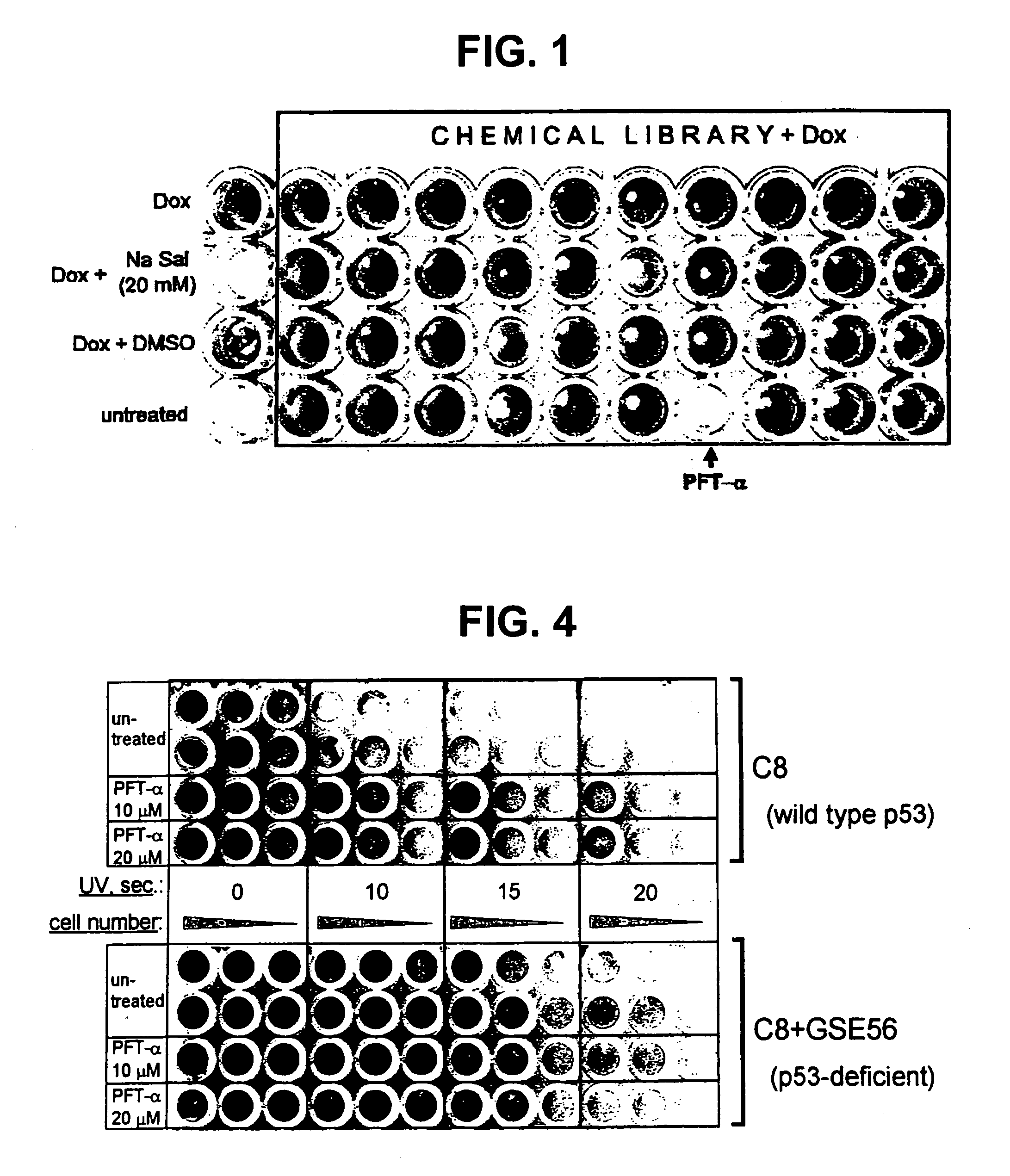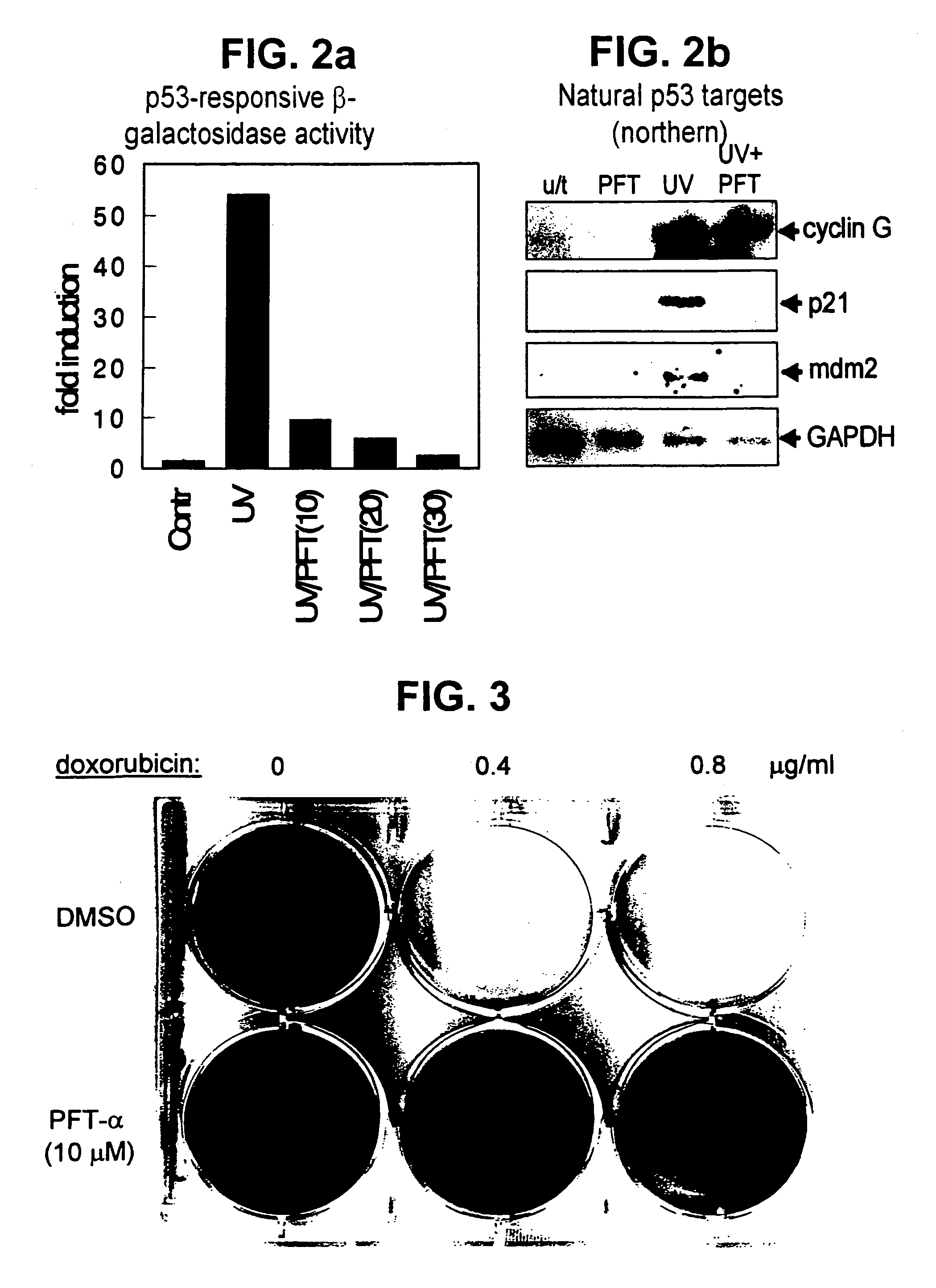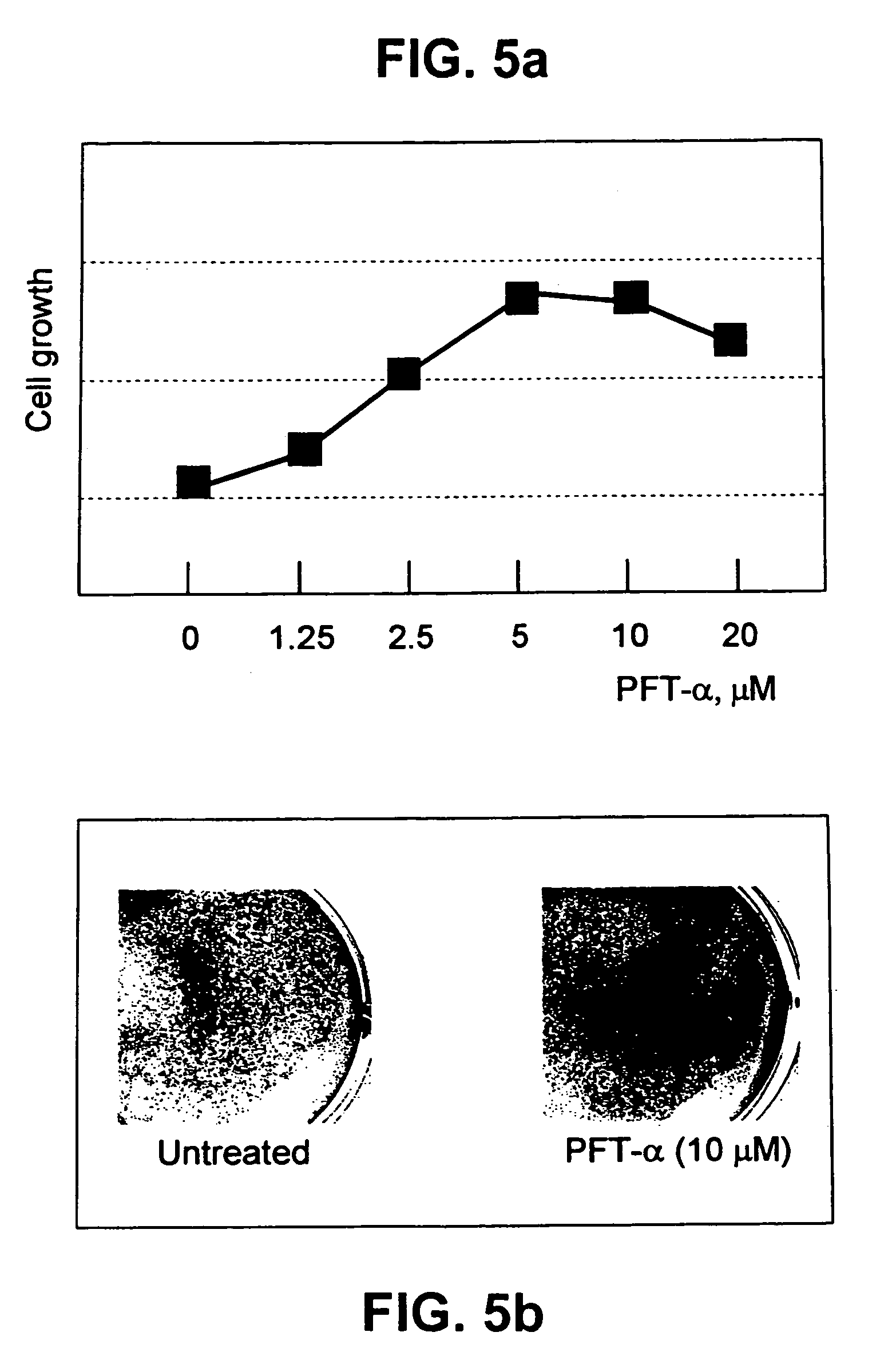P53 inhibitors and therapeutic use of the same
a p53 inhibitor and inhibitor technology, applied in the field of p53 inhibitors, can solve the problems of limiting the effectiveness of these therapies, inactivating p53 is considered undesirable and unwanted, and p53-deficient mice almost universally contract cancer, so as to reduce or eliminate neuronal damage, and reduce or eliminate p53-dependent neuronal death
- Summary
- Abstract
- Description
- Claims
- Application Information
AI Technical Summary
Benefits of technology
Problems solved by technology
Method used
Image
Examples
Embodiment Construction
[0071]As previously stated, the effectiveness of chemo- and radiation therapy has been limited by severe side effects to normal tissue, including injuries to hematopoietic and lymphoid systems, intestinal epithelia, and testicular cells. Because p53 is involved in the induction of such injuries, p53 was investigated as a potential target for therapeutic suppression to decrease damage to normal tissue. p53 suppression therapy is especially useful in the treatment of tumors that lack functional p53, and therefore that cannot benefit from additional p53 suppression.
[0072]p53 performs an important function by eliminating damaged and potentially dangerous cells by forcing the cell to give its own life for the benefit of the entire cell society of the organism. Inhibiting p53 activity during cancer therapy could lead to the survival of genetically altered cells, which otherwise would be eliminated by p53-dependent growth arrest or apoptosis. Therefore, p53 suppression has an inherent dang...
PUM
| Property | Measurement | Unit |
|---|---|---|
| concentrations | aaaaa | aaaaa |
| thick | aaaaa | aaaaa |
| cellular stress | aaaaa | aaaaa |
Abstract
Description
Claims
Application Information
 Login to View More
Login to View More - R&D
- Intellectual Property
- Life Sciences
- Materials
- Tech Scout
- Unparalleled Data Quality
- Higher Quality Content
- 60% Fewer Hallucinations
Browse by: Latest US Patents, China's latest patents, Technical Efficacy Thesaurus, Application Domain, Technology Topic, Popular Technical Reports.
© 2025 PatSnap. All rights reserved.Legal|Privacy policy|Modern Slavery Act Transparency Statement|Sitemap|About US| Contact US: help@patsnap.com



